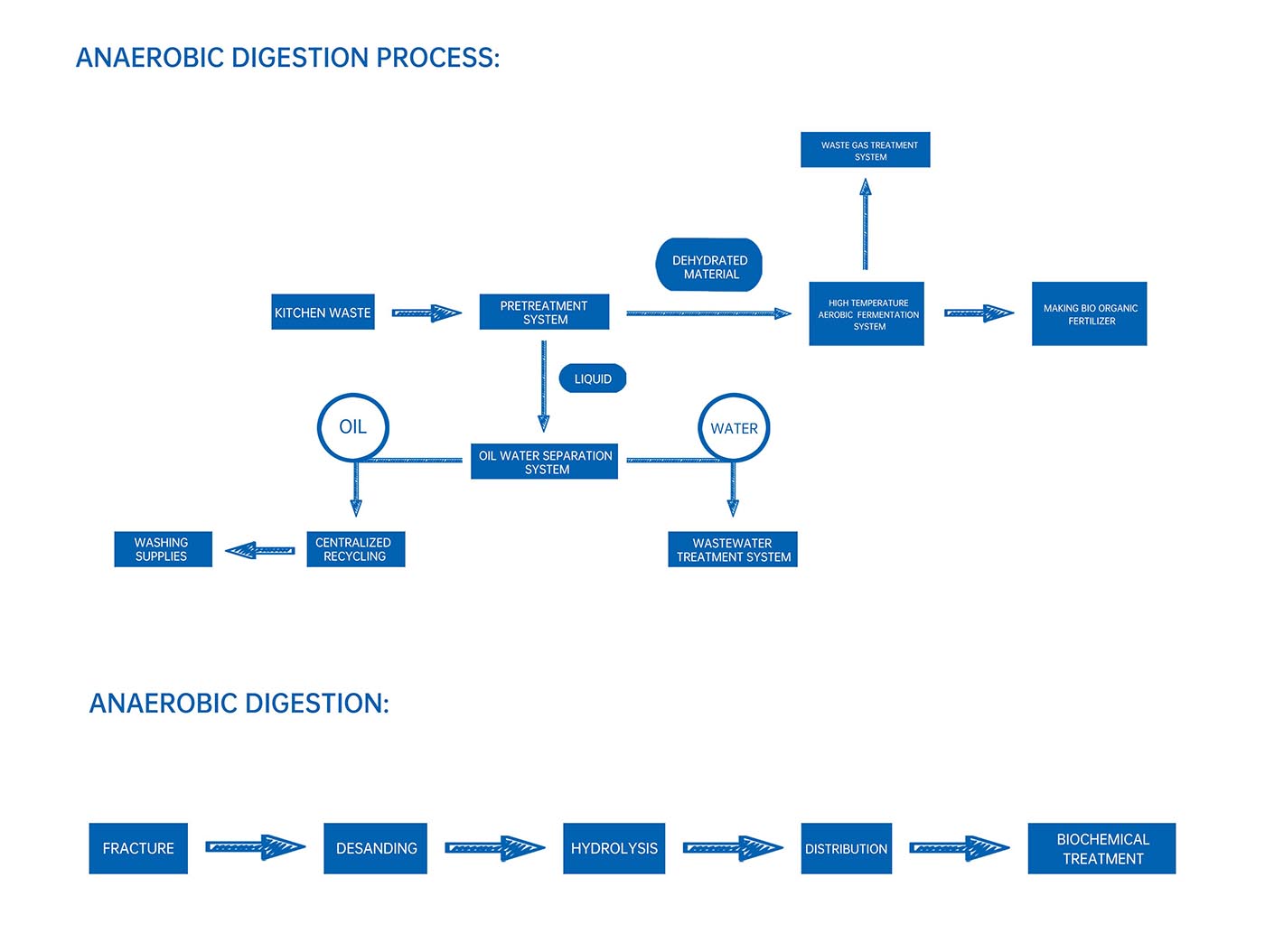Smart Service
According to relevant national technical specifications and design and operation experience and data of similar kitchen treatment projects, and relying on strong equipment manufacturing capacity, our company has manufactured a set of modular and integrated complete set of kitchen waste equipment and technology suitable for China's national conditions, and completed industrial production and operation. The comprehensive treatment equipment integrates pretreatment, biochemical treatment, residue oil-water separation and collection, three wastes treatment and other technologies to reduce the amount of food waste, harmless application and resource utilization.
Food waste is divided into impurities, organic residues, wastewater and waste oil through pretreatment. Pretreatment has the characteristics of high impurity removal rate, high oil extraction rate and low organic matter loss rate. According to the actual situation, we should give priority to the adoption of equipment with mature technology, high efficiency and reliable operation, and insist on the principle of combining advanced technology, feasibility and economy of technology. At present, there are two commonly used food waste treatment processes in China, namely anaerobic digestion and microbial treatment technology.
Anaerobic digestion process:
After unloading, all kitchen waste is temporarily stored in the receiving hopper, then transported to the hammer crusher for crushing, and the sand and gravel are removed through the sand removal system, and then enter the hydrolysis tank. After the food waste is transported to the treatment plant, the food waste will be transported to the automatic separator for manual sorting, the materials on the screen will be collected centrally and sent to the sanitary landfill for landfill disposal, and the materials under the screen will enter the biochemical treatment section.
Microbial treatment process:
Microbial treatment technology the fermentation principle of microbial bacteria is to use kitchen waste as culture medium for short-term aerobic fermentation. The sterilized and stably matured materials, after preliminary screening and removal of wood blocks, plastics and other substances, intercept the ferrous metal in the screened materials through magnetic separation, enter the finished product warehouse and complete bagging. The sieved materials with no use value are directly sent to the sanitary landfill.
